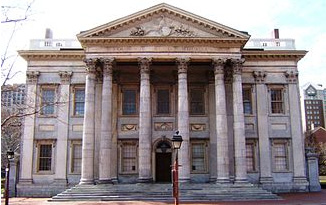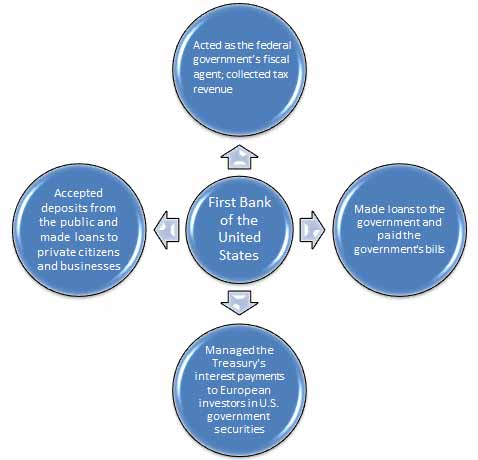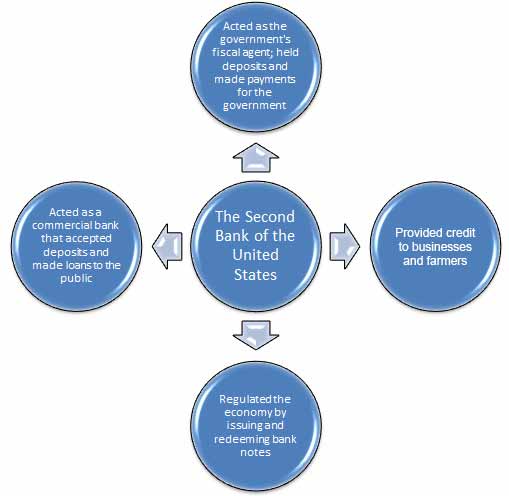
Source: First Bank of United States00, Davidt8, Wikimedia.

Source: First Bank of United States00, Davidt8, Wikimedia.
One of the most important achievements of Secretary of the Treasury Alexander Hamilton was the successful charter of the First Bank of the United States. Hamilton argued for the creation of a central bank that would stabilize the financial system during the republic’s early years, along with lending funds to the federal government as one of its major functions. Hamilton proposed his idea to Congress, who signed it into law in 1791.

The Second Bank of the United States
Because of the difficulty that the United States had in financing the War of 1812, it became clear that a national bank was necessary to stabilize the nation's financial system. As a result, the charter for the Bank of the United States was renewed in 1816. Support for the Second Bank of the United States came from people who thought that another national bank would again provide relief for the country’s poor economy and help in paying its war debt.
Although some political figures such as were against the charter, it was passed and limited to another 20 years.

There continued to be debate over the purpose and function of the Second National Bank. The bank became an issue in the 1828 presidential campaign and election, which won. Jackson had distrusted banks ever since he received worthless bank notes in a land deal. Jackson believed that the bank put the financial power in the hands of a few private citizens and did not have an effective system of regulation to protect the rest of the citizens.
After the election, Jackson ordered that all federal deposits be removed from the national bank and put into state banks. By the end of the 1833, the government money had been moved out of the Second National Bank of the United States, and soon most of the branches closed.